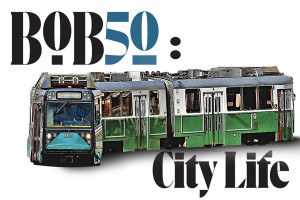How A Nobel Winning Economist Helped Fix Boston School Selection
Harvard Professor Alvin Roth won the Nobel Prize in Economics Monday, along with Lloyd Shapley of UCLA, for his work fixing markets that match people to one another. Among those markets is the system that assigns Boston students to schools.
UCLA’s Shapley helped create the theory of how to best to find stable matches between pairs when prices aren’t available. Roth has found practical applications to the theory, helping fix real-world problems in systems from medical residency programs to organ donations. Here he is sounding like a nerdy Ghostbuster in a great 2011 Globe profile by Leon Neyfakh: “We’re starting to know enough about how some of these things work,” Roth tells Neyfakh, “that in some cases, when you’ve got a market in trouble, and you think, ‘Who’re you gonna call?’ you could call an economist.”
Among those who did call him were the people trying to fix the process of matching students to schools in New York City and Boston. In 2003, after economists published a paper describing the problems with Boston’s schools, Roth worked with the economists and the city to design a new method.
The old way asked students to rank their schools in order, and then allocated spaces, giving preference to those with siblings and those in walking distance. An article studying the problem from the education think tank Education Sector describes how the old method became dysfunctional:
With every student allowed to make five selections, savvy families carefully calculated the popularity of schools and selected less attractive schools as first and second choices to ensure that they wouldn’t end up without any of their picks. One group of parent activists in Boston, the West Zone Parents Group, used a listserv to communicate details about school openings: “I think there are probably two or three siblings entering K–2 [at Philbrick Elementary School]. I know of two people who are putting it as their first choice. …”
The result was far too few students put in their true top choice, and too many randomly assigned to schools not on their list, (especially those without parents willing to sit on listservs to ensure their kids wouldn’t be the losers.)
The New York Times describes the fix: a “deferred acceptance algorithm,” developed by Shapley and advanced by Roth.
The algorithm works by tentatively accepting students to their top-choice school. It holds off on the final assignment until going through all the other applications to make sure there are not other students who have a higher claim to a spot at that given school (because those other students might have higher test scores, a sibling at the school, or whatever other criteria the school prioritizes) even if those students happened to rank the school lower on their list of preferences.
This kind of system allows parents to stop gaming the system because it rewards them for listing their true top choices. The Education Sector authors argued that the new system brought huge benefits to the city’s schools by improving its perception among middle-class families and providing impetus for reform among schools that were failing to attract any students. It’s pretty cool stuff, and it’s worth a revisit today in light of Roth’s huge honor from the Nobel committee.
Correction: The post originally misspelled Professor Roth’s name on several references. We regret the error.


